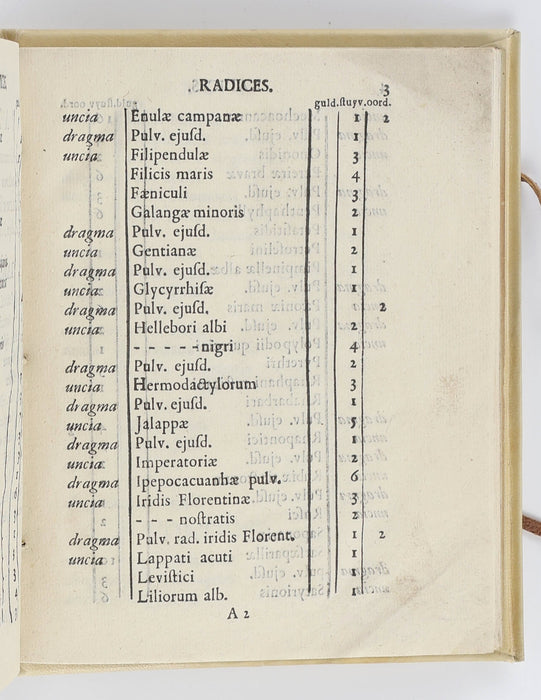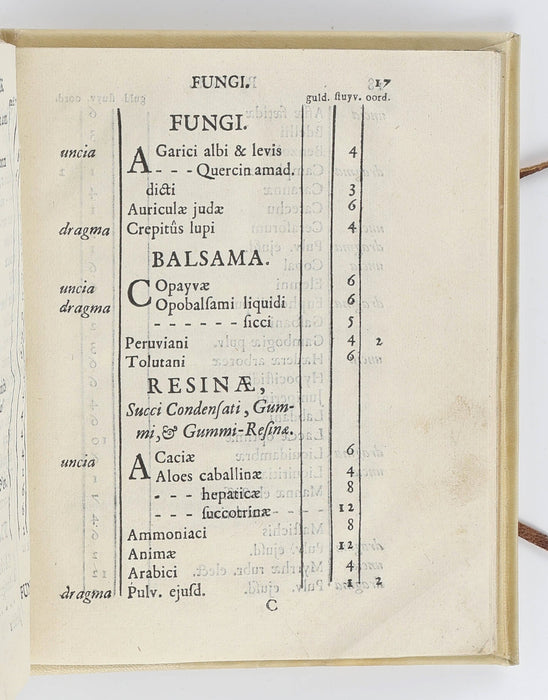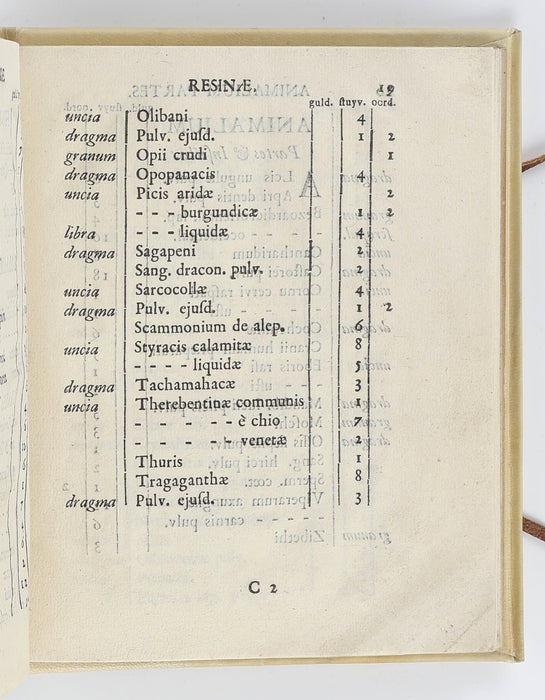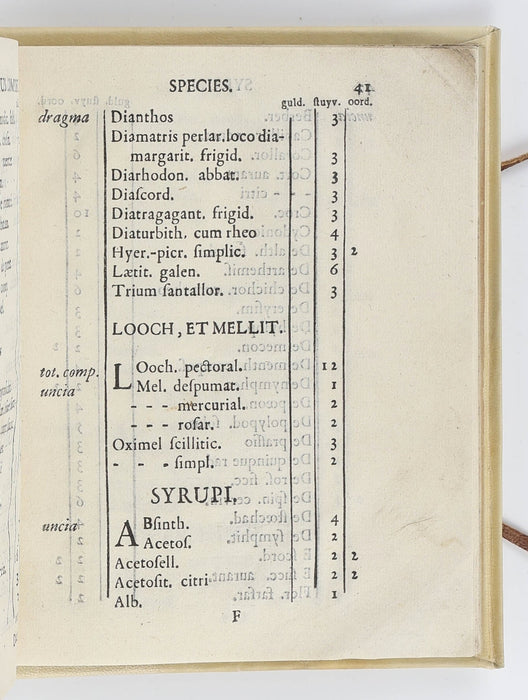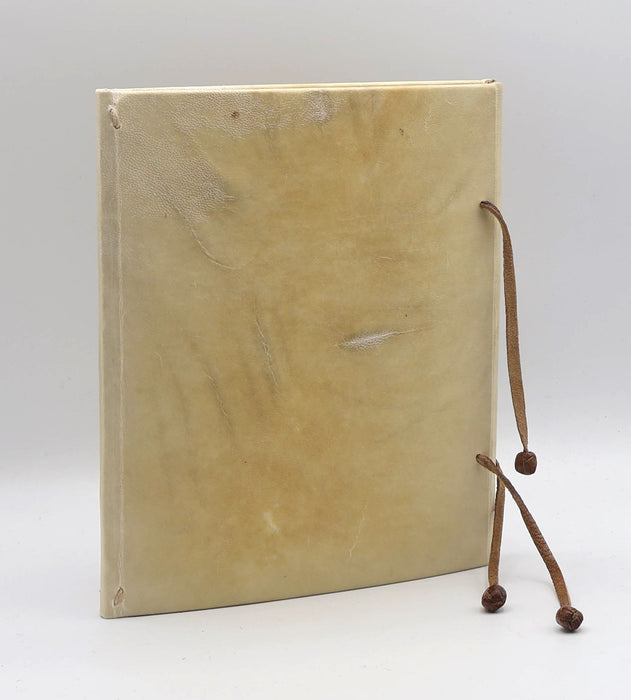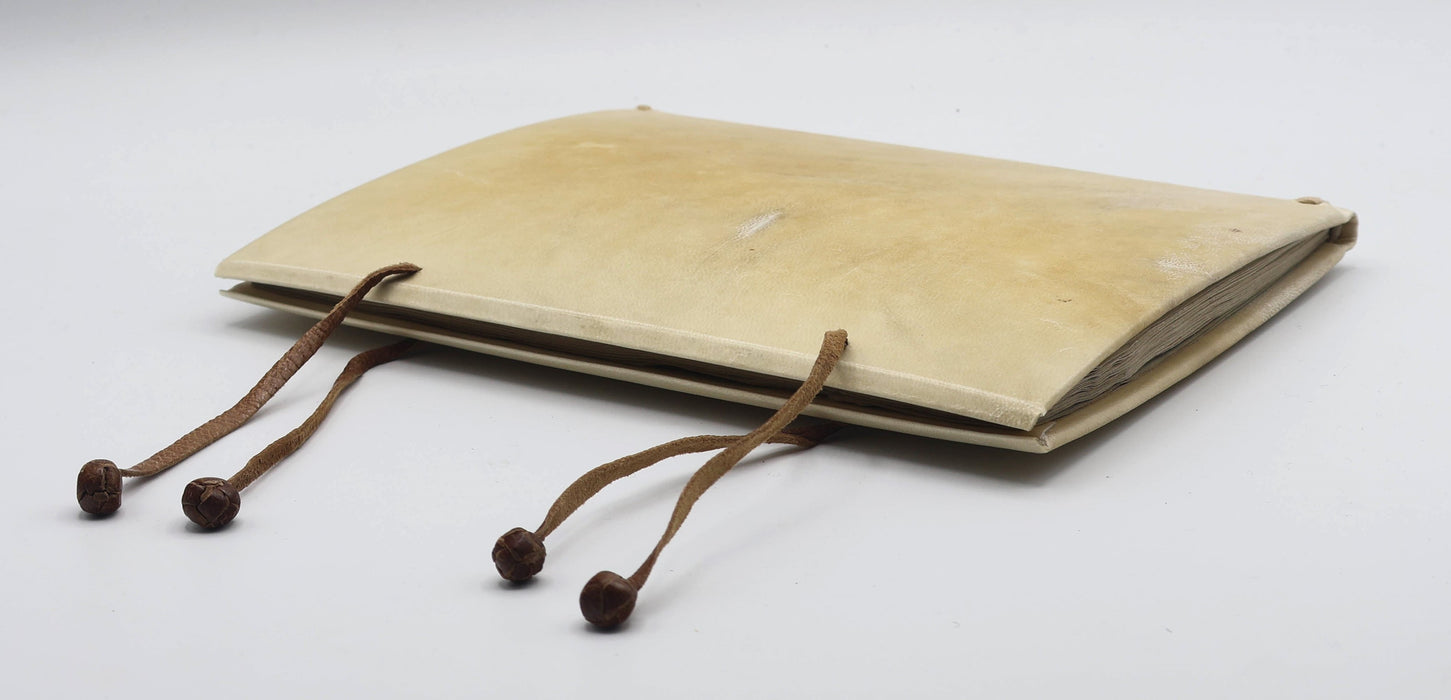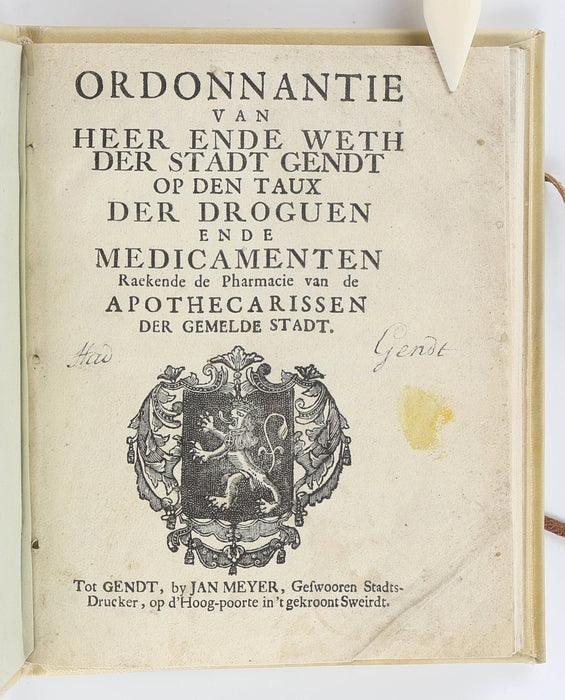
CONTROLLING THE SALE OF MEDICINE
[Pharmacy regulation. Ghent]: Ordonnantie van Heer ende Weth der Stadt Gendt op den Taux der Droguen ende Medicamenten Raekende de Pharmacie van de Apothecarissen der gemelde Stadt. Gendt [i.e. Ghent], Jan Meyer, 1757.
Very rare first edition of this Ghent tax ordinance for medical goods, which provides a fascinating insight into the history of medicine and financial regulation in eighteenth-century Belgium. The preface, in Dutch, explains that apothecaries (etc.) will be fined 12 guilder if they sell medical goods for more than the amounts listed in the book, and that they must also pay the required tax ‘punctuelyck ende exactelyck’ (i.e. punctually and precisely).
The text itself is predominantly tabular, listing various medical goods under their Latin names. Each item has a corresponding tax rate (e.g. uncia, which is 1/12), and a maximum price. The goods are divided into categories such as roots, flowers, animal parts, minerals, and ointments.
Unsurprisingly, some of the most expensive items on the list are those that had to be imported from outside Europe. ‘Margaritarum oriental’, i.e. ‘oriental pearls’, have a maximum price of 3 guilder (p. 23). Cinnamon, native to Southeast Asia, is also relatively costly (max. price 15 Stuyv.; p. 6).
Opium use was becoming more and more common in western medicine during the century in which the ‘Ordonnantie’ was written (cf. Maehle 1995, p. 52). ‘Opii crudi’, i.e. ‘crude opium’, has a maximum price of 1 Oord in this ordinance (p. 19).
An important reference text, copies of the Ordonnantie likely saw extensive use before becoming obsolete. This may help to explain why so few survive today. It appears that the present copy was originally stab-stitched, an inexpensive but strong style of binding that would have complemented practical everyday use. The end of the book lists errata for Pharmacopoea Gandavensis, a contemporary medical reference text (presumably referring here to STCV 12916656).
The title page identifies Jan Meyer as the ‘Geswooren Stadts-Drucker’ of Ghent, i.e., the sworn city printer. According to Ferdinand van der Haeghen (1861), Meyer was active between 1737–1771 and predominantly printed items issued by the magistrate of the municipality. Jan Meyer was succeeded as sworn printer of Ghent by Josse Begyn, who went on to produce the only other known edition of ‘Ordonnantie’ in 1787 (STCV 12914377).
Details
Printed. One volume, 20.8 cm x 17 cm in binding, quarto, pp. [4], 50, [6]. Collation: π2 , A–G4 (G4 blank). Ghent coat of arms on title page (lion rampant on dark shield). Horizontal woodcut ornament at head of preface.
Bound in vellum over boards, with fore edge cover extensions. Four leather ties, each with leather bead at end. Two pale blue flyleaves at front and two at rear, with matching pastedowns. Three holes in inner margin of each page, indicating earlier stab-stitching.
Condition (textblock): light browning, tape repairs to 3 pages (all blank margins), occasional loss to lower corners (all blank), small yellow stain on title page. Condition (binding): some imperfections in vellum, staining to flyleaves from leather ties.
Provenance:
- Early annotation on title page (Hai[?] Gendt).
- Pencil note on front pastedown (Ant 5C).
- Pencil note on rear pastedown (J8FEVE7JZXPO).
Bibliography
Not in STCV.
OCLC shows two copies in the Low Countries but none elsewhere (Bibliotheek Universiteit van Amsterdam, Koninklijke Apothekersvereniging van Antwerpen).
van der Haeghen, Ferdinand, Bibliographie Gantoise: recherches sur la vie et les travaux des imprimeurs de Gand (1483–1850), Tome III, 1ère Partie du XVIIIe Siècle (Ghent: E. Vanderhaeghen, 1861), pp. 324– 325, 341 (no. 3754). Last accessed 14 May 2021 via https://archive.org/details/bibliographiega28haeggoog/page/n12/mode/2up
Maehle, Andreas-Holger, ‘Pharmacological Experimentation with Opium in the Eighteenth Century’, in Roy Porter and Mikuláš Teich (eds.), Drugs and Narcotics in History (Cambridge: Cambridge University Press, 1995), pp. 52–76.

